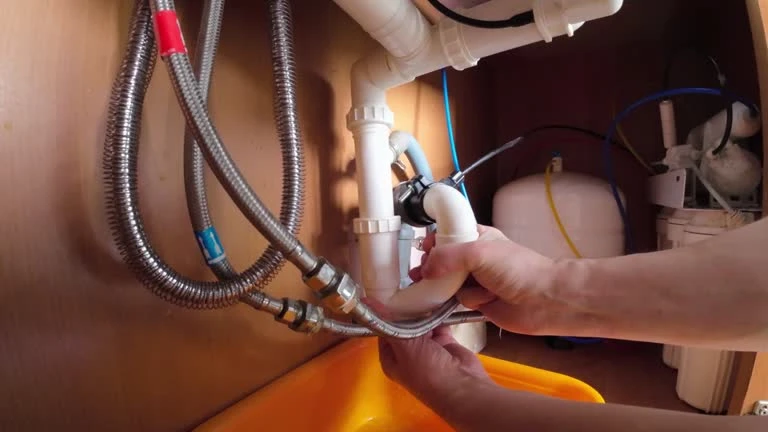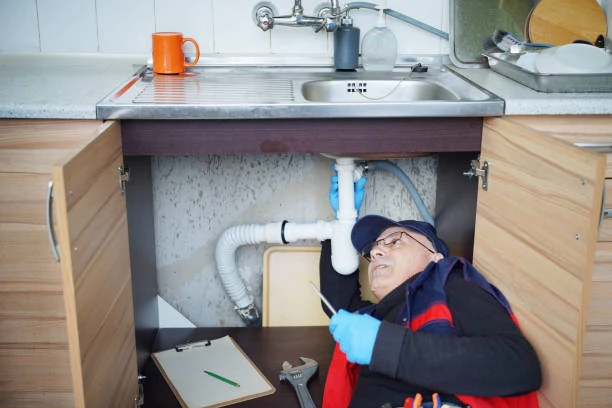Introduction to PEX Fitting Connections
PEX (cross-linked polyethylene) fittings have gained popularity in plumbing. These connections provide a flexible and durable solution for water systems. Many homeowners and professionals favor PEX for its unique properties. However, like any material, it has its pros and cons. Understanding these aspects helps in making informed decisions about their use.
Advantages of PEX Expansion Fittings
PEX expansion fittings offer several benefits. First, they resist corrosion and scale buildup. Unlike copper, PEX does not corrode over time. This longevity makes it a valuable choice for plumbing systems. Additionally, PEX expansion fittings provide excellent flexibility. This feature allows for easy installation in tight spaces.
Furthermore, these fittings can handle extreme temperatures. They remain effective in both hot and cold water applications. The ease of installation reduces labor costs. Installers can quickly connect and disconnect PEX tubing. This efficiency saves both time and money on projects.
The versatility of PEX expansion fittings enhances their appeal. They work well in various plumbing setups, including residential and commercial. For example, in retrofitting old systems, PEX can easily integrate with existing pipes. This flexibility makes it a smart choice for modern plumbing solutions.
Disadvantages of PEX Expansion Fittings
Despite the advantages, PEX expansion fittings do have drawbacks. One major concern is their susceptibility to UV damage. Prolonged exposure to sunlight can weaken the material. Therefore, it is crucial to install PEX indoors or protect it from sunlight.
Another disadvantage is the potential for leaching chemicals. Some studies raise concerns about PEX releasing substances into drinking water. While these claims often lack conclusive evidence, they remain a point of contention. Homeowners may prefer materials with fewer health risks.
Additionally, PEX fittings can be more expensive than traditional options. Although the installation may save money, the initial costs can deter some buyers. This price difference can influence decisions, especially on a tight budget.
Installation Process of PEX Expansion Fittings
The installation of PEX expansion fittings is generally straightforward. First, gather all necessary tools and materials. You will need a PEX expansion tool, fittings, and PEX tubing. Ensure you have the correct size for your project.
Begin by cutting the PEX tubing to the desired length. Use a clean, straight cut for optimal results. Next, slide the fitting into the end of the tubing. After that, use the expansion tool to enlarge the tubing. This process allows for a secure fit once the tubing contracts around the fitting.
The simplicity of this installation method contributes to PEX’s popularity. Homeowners can often complete projects without professional help. This ease of use appeals to DIY enthusiasts.
PEX Expansion Fittings and Temperature Resistance
Temperature resistance is another critical aspect of PEX expansion fittings. These fittings can handle both hot and cold water applications. They remain flexible even in extreme temperatures, which is essential for plumbing systems.
For instance, a PEX system can efficiently deliver hot water to faucets. Similarly, it can supply cold water without compromising performance. This versatility makes PEX suitable for various climates.
Moreover, PEX expansion fittings prevent freezing in colder regions. Unlike rigid materials, PEX can expand when water freezes. This property reduces the risk of burst pipes. Homeowners in cold areas often choose PEX for this reason.
Comparisons with Other Fitting Materials
When comparing PEX expansion fittings to other materials, differences become apparent. Copper fittings, for instance, offer durability but are prone to corrosion. PEX does not suffer from this issue, providing a longer lifespan.
Moreover, PVC fittings are lightweight and affordable. However, they lack the flexibility that PEX offers. This flexibility simplifies installation in various settings.
Another popular choice is CPVC. While it can withstand high temperatures, it is less flexible than PEX. This rigidity may complicate installations in tight spaces. Overall, PEX expansion fittings provide a balance of flexibility and durability not found in other materials.
Maintenance of PEX Expansion Fittings
Maintaining PEX expansion fittings is relatively easy. Regular inspections can help identify potential issues early. Homeowners should check for signs of UV damage or wear. Protecting PEX from sunlight is crucial for longevity.
Flushing the system periodically ensures clean water flow. This practice also helps prevent buildup within the pipes. Additionally, keeping fittings free from debris is essential for a secure connection.
Professional servicing can enhance the lifespan of PEX systems. Experienced plumbers can address concerns and perform necessary repairs. Regular maintenance extends the life of PEX fittings, making them a cost-effective choice.
Conclusion: Making the Right Choice
In conclusion, PEX expansion fittings offer unique advantages and disadvantages. Their flexibility, resistance to corrosion, and ease of installation make them appealing. However, concerns about UV damage and chemical leaching exist.
Homeowners must weigh these factors based on their specific needs. Consulting with plumbing professionals can provide valuable insights. Ultimately, understanding the benefits and drawbacks of PEX expansion fittings aids in making informed decisions for plumbing projects.
IFAN Products international standards
IFAN products strictly adhere to a comprehensive range of international standards, encompassing ISO 15874, EN 15874, ASTM F2389, DIN 8077/8078, GB/T 18742, NBR 15884, ISO 15494, EN ISO 15494, GB/T 19472, NBR 15494, ASTM 2846 (501), DIN 8079/8080 (502), ASTM F441/F441M SCH80 (503), DIN (504), DIN (505), GB/T 18993, AS/NZS 1477, CSA B137.6, NSF/ANSI 14, TIS 17-2532/1131-2535, BS 3505, BS 4346 (801), ASTM D1785 SCH40 (802), ASTM D1785 SCH80 (803), DIN (804), GB (805), GB (806), GB(901), DWV(902), ASTM D2665 (903), along with ASTM D2241, D2665, D2729, and F441/F441M series, ISO 1452, EN ISO 1452, DIN 8061/8062, GB/T 10002, AS/NZS 1477, JIS K6741, CSA B137.3, and other national and industry norms.
Connect
IFAN is a Chinese manufacturer of plastic pipes, fittings and valves with 30 years of experience. If you are interest in IFAN copper fittings, copper valves, plastic pipes and fittings, please contact us. IFAN offers you a variety of standard pipes to meet your specific needs. Click below to learn more about IFAN’s wide range of affordable and cost-effective valve products and piping system related products.
We will reply your email or fax within 24 hours.
You can call us at any time if there is any question on our production.
For more information,pls visit our webside https://waterpipefitting.com/
Pls Mailto: [email protected]
Whatsapp: +86 15088288323














Recent Comments